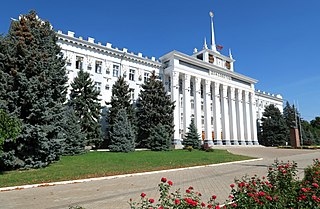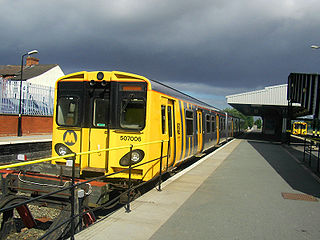In 1995, the main means of transportation in Moldova were railways and a highway system. The major railway junctions are Chișinău, Bender, Ungheni, Ocnița, Bălți, and Basarabeasca. Primary external rail links connect the republic's network with Odesa on the Black Sea and with the Romanian cities of Iași and Galați; they also lead northward into Ukraine. Highways link Moldova's main cities and provide the chief means of transportation within the country, but roads are in poor repair. The country's major airport is in Chișinău.

Chișinău is the capital and largest city of Moldova. The city is Moldova's main industrial and commercial centre, and is located in the middle of the country, on the river Bîc, a tributary of the Dniester. According to the results of the 2014 census, the city proper had a population of 532,513, while the population of the Municipality of Chișinău was 700,000. Chișinău is the most economically prosperous locality in Moldova and its largest transportation hub. Nearly a third of Moldova's population lives in the metro area.

Tiraspol is the capital and largest city of Transnistria, a breakaway state of Moldova, where it is the third-largest city. The city is located on the eastern bank of the Dniester River. Tiraspol is a regional hub of culture, economy, tourism, and light industry, such as furniture and electrical goods production.

New Cross Gate is an interchange station between the Windrush line of the London Overground and National Rail services operated by Southern, located in New Cross, London. It is on the Brighton Main Line, 2 miles 70 chains down the line from London Bridge. It is in Travelcard Zone 2.

Transnistria, officially known as the Pridnestrovian Moldavian Republic and locally as Pridnestrovie, is a landlocked breakaway state internationally recognized as part of Moldova. It controls most of the narrow strip of land between the Dniester river and the Moldova–Ukraine border, as well as some land on the other side of the river's bank. Its capital and largest city is Tiraspol. Transnistria is officially designated by the Republic of Moldova as the Administrative-Territorial Units of the Left Bank of the Dniester or as Stînga Nistrului.

Broadmeadows railway station is a commuter, regional and inter-city railway station on the suburban Craigieburn line, the regional Seymour and Albury lines, and the inter-city Southern line. It serves the northern suburb of Broadmeadows in Melbourne, Victoria, Australia. Broadmeadows is a ground level premium station featuring three side platforms. Platforms 1 and 2 are used for broad gauge Metro and V/Line services, while Platform 3 is used for standard gauge V/Line and NSW TrainLink services. The station opened on 1 February 1873, with the current station provided in 1990.

The Transnistria War was an armed conflict that broke out on 2 November 1990 in Dubăsari between pro-Transnistria forces, including the Transnistrian Republican Guard, militia and neo-Cossack units, which were supported by elements of the Russian 14th Army, and pro-Moldovan forces, including Moldovan troops and police.

Ukrainian Railways or Ukrzaliznytsia (UZ) (Ukrainian: Укрзалізниця) is a state-owned joint-stock company administering railway infrastructure and rail transport in Ukraine; a monopoly that controls the vast majority of the railroad transportation in the country. Ukrainian Railways is the world's sixth largest rail passenger transporter and world's seventh largest freight transporter. As of 2020, the total length of the main broad-gauge (1,520 mm) railroad network was 19,787 kilometres (12,295 mi), making it the 13th largest in the world. Ukraine also has many stretches of standard-gauge railway (1,435 mm), and is currently working to expand these in order to improve its connections to the European Union.

Rock Ferry railway station is situated in the Rock Ferry area of Birkenhead, Merseyside, England. The station lies 4.5 miles (7 km) south west of Liverpool Lime Street on the Chester and Ellesmere Port branches of the Wirral Line of the Merseyrail network. The station has an island platform with four platforms in total and four tracks.
The railways in Germany use several abbreviations to differentiate between various types of stations, stops, railway facilities and other places of rail service.

Rail transport in Ukraine is a major transport mode in Ukraine. Most railway infrastructure in Ukraine is owned by the government of Ukraine through Ukrzaliznytsia, a joint-stock company which has a de facto country-wide monopoly on passenger and freight transport by rail.

The Pridnestrovian Moldavian Soviet Socialist Republic (PMSSR), also commonly known as Soviet Transnistria or simply as Transnistria, was created on the eastern periphery of the Moldavian Soviet Socialist Republic (MSSR) in 1990 by pro-Soviet separatists who hoped to remain within the Soviet Union when it became clear that the MSSR would achieve independence from the USSR and possibly unite with Romania. The PMSSR was never recognised as a Soviet republic by the authorities in either Moscow or Chișinău. In 1991, the Pridnestrovian Moldavian Republic succeeded the Pridnestrovian Moldavian Soviet Socialist Republic.

This timeline of events is a chronological list of incidents and other notable occurrences related to the War of Transnistria, including events leading up to the war.

Law enforcement in Transnistria is administered by the region's own police force. Transnistria functions as a presidential republic, with its own government, parliament, military, paramilitary and police (militsiya) force, constitution, currency, postal system and stamps, flag, national anthem, and coat of arms.
The Winsford and Over branch line was a railway line serving the town of Winsford in Cheshire. It was operated by the Cheshire Lines Committee (CLC) from 1870 until the railways were nationalised under the Transport Act 1947, which took effect on 1 January 1948. Thereafter the branch was operated by British Railways London Midland Region until the line's closure in 1967.

Calea Ferată din Moldova is the sole railway operator in the Republic of Moldova, responsible for passenger and cargo transportation, as well as railway infrastructure maintenance within the country. The total length of the network managed by CFM is 1,232 kilometres (766 mi), of which 1,218 kilometres (757 mi) are 1,520 mm, and 14 kilometres (8.7 mi) are 1,435 mm. The entire network is single track and is not electrified. It borders the Romanian railway network, with a 1,520 mm /1,435 mm break-of-gauge in the west, and the Ukrainian one in the east.

Two universities claim the succession of the Taras Shevchenko State University of Tiraspol; the Transnistrian State University located in Tiraspol, Transnistria, and the Tiraspol State University located in Chișinău, Moldova.
The 14th Guards Combined Arms Army was a field army of the Red Army, the Soviet Ground Forces, and the Russian Ground Forces, active from 1956 to 1995. By the 1990s, according to sources within the 14th Army, the majority of its troops came from what would become the Pridnestrovian Moldavian Soviet Socialist Republic, with 51% of officers and 79% of draftees coming from this region.

Transnistrian Railway is the railway operator of Transnistria.

Currently, there are three defined types of public roads in the Republic of Moldova:






















